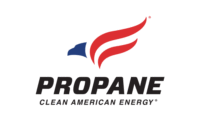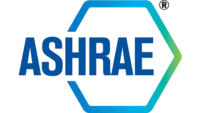Danfoss discussed the latest trends and technologies in the HVACR industry at its annual press breakfast at AHR Expo on Tuesday, Feb. 7. The 27th annual event featured remarks from Danfoss executives and customers, focusing on sustainability, the climate agenda and the Danfoss technologies that will help customers achieve their decarbonization goals.
Rick Sporrer, president of Danfoss North America, kicked off the program with a discussion on Danfoss’ recent achievements and how the company’s ESG (Environmental, Social, Governance) goals are guiding its business agenda and innovation. In addition to Danfoss’ commitment to becoming carbon-neutral by 2030, the company is striving to become its customers’ preferred partner for decarbonization, recognizing that investors, partners and end users are increasingly evaluating a company’s ESGs prior to establishing a business relationship.
“As part of Danfoss’ ESG goals, we want to help our customers decarbonize by developing cost-effective, energy-efficient solutions,” he said. Among those solutions are Danfoss Turbocor’s oil-free, magnetic-bearing compressors that work in conjunction with Danfoss variable-speed drives to provide efficient and optimal performance in full and part-load conditions, reducing energy costs and carbon emissions.
Steve Lakin, Danfoss director of public and industry affairs, noted the regulatory developments at the federal, state and local levels and the opportunities they are creating. The Inflation Reduction Act, AIM Act, changes to SNAP rules and new HVAC energy efficiency standards represent an increased commitment to energy efficiency and decarbonization. With 33 states adopting climate action plans, the demand for HVACR technologies that lower energy usage and carbon emissions is growing and Danfoss is well-positioned to support customers in achieving their energy savings and carbon reduction goals.
Jeff Staub, director of OEM sales at Danfoss, discussed the growing trend toward heat pumps as the move toward decarbonization creates demand for electric heat sources. Danfoss manufactures a broad range of technologies for heat pumps, including valves and compressors, to enable heat pumps to work more efficiently and effectively. Scott DeGier, vice president of Danfoss customer Multistack, a Wisconsin-based manufacturer with 30 years of experience in energy-efficient heat pumps, chillers and other HVAC solutions, followed with a presentation on a recent project. After Multistack installed heat pumps powered by Danfoss Turbocor compressors in a large multi-use building in the Boston area, building energy costs decreased by 19% and carbon emissions by 37%.
Jakob Jul Jensen, head of business development for data centers at Danfoss, spoke about the growth of data centers and the resulting increase in cooling needs. “Data centers can’t be built fast enough to keep up with the demands of our digital age,” said Jensen, noting that the growth, coupled with the desire for sustainable cooling solutions, is creating opportunities for innovation.
Jakob Carnemark, founder of Endeavour Energy, a Danfoss customer that partners with global cloud companies to build data centers with waterless, energy-saving cooling solutions, shared his company’s story of using Danfoss technologies, including Turbocor compressors, as part of its comprehensive waterless cooling system. The result was an efficient cooling system, using no water or outside air, that met cooling needs for data centers in high-temperature climates, reducing both water and energy usage and reflecting Danfoss’ own goals to help customers build a more sustainable future.
“These examples from our customers demonstrate the growing importance of sustainable solutions; we know that our customers are concerned about their carbon footprint across the product life cycle and part of our ESG strategy is to offer localized production for our customers,” said Sporrer. “We're happy to announce that production of our compressors and sensing solutions in North America will be expanding with the construction of a new facility in Apodaca, Mexico that will be operational by the end of 2024.”



